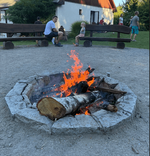Discover the Flavors of Coffee with Us☕️!
Join us on an aromatic journey through our recent cupping session at Logex! This unique event was not only a delight for the senses but also an educational deep dive into the world of coffee tasting. Cupping, a professional method for evaluating coffee, revealed the intricate flavors and aromas of 14 different coffee samples from renowned South Moravian roasteries.
Coffee tasting at Logex: Introducing Cupping
Recently, we organized a cupping session at our company, which is a professional term for tasting and evaluating different types of coffee. This process is popular among coffee industry professionals, as well as enthusiastic coffee lovers who want to explore the complexity and diversity of coffee flavors. In this part of the article, we will explain what cupping is, how it works, and what we evaluate during the process.
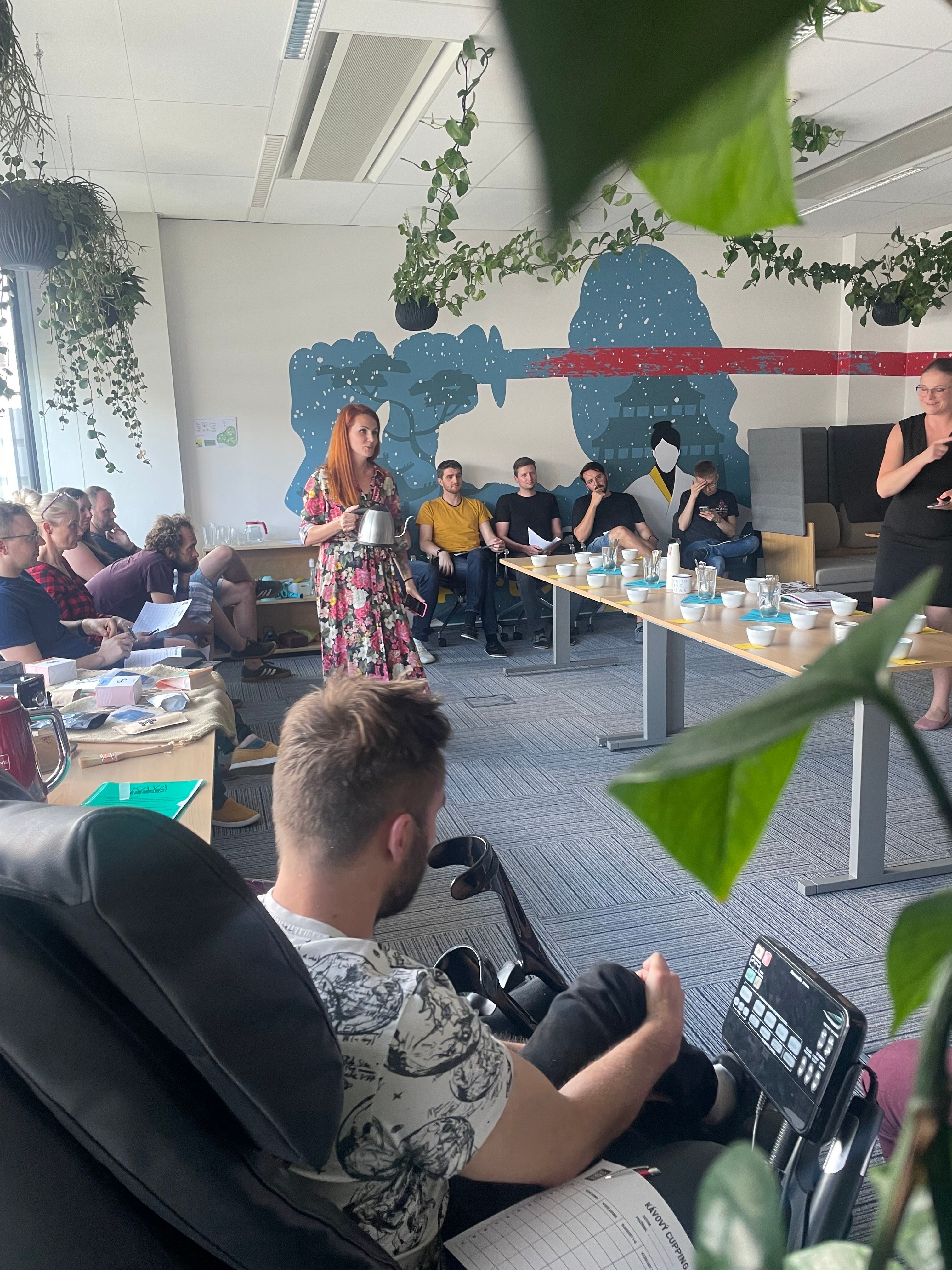
Cupping is a standardized method for coffee tasting, allowing for an objective assessment of its characteristics. The cupping process involves several steps:
1. Preparation of coffee: Coffee beans are freshly ground to a coarse consistency, similar to grinding for a French press. Each sample is placed in cupping bowls.
2. Dry aroma: First, we evaluate the dry aroma of the freshly ground beans, which gives us the first hint of the flavors we can expect.
3. Adding water: Hot water (approximately 93°C) is poured over each portion of coffee and left to stand for 4 minutes. A crust forms on the surface, trapping the aroma.
4. Breaking the crust and aroma: After 4 minutes, the crust is broken with a spoon, releasing intense aromas that we evaluate again.
5. Removing the crust and tasting: The crust is removed, and the coffee is tasted. A spoonful of coffee is slurped loudly to spread it evenly over the palate, revealing all its flavors.
What do we evaluate during cupping?
During cupping, we assess several key aspects of the coffee:
1. Aroma: The aroma of the coffee can hint at its flavors. It may contain notes of flowers, fruit, chocolate, spices, and other aromatic elements.
2. Flavor: Flavor is the most important aspect of coffee evaluation. We examine the primary taste components, such as sweetness, acidity, bitterness, and the body of the coffee.
3. Acidity: Acidity in coffee is often perceived as brightness or sharpness. It can be fruity, citrusy, or wine-like.
4. Body: The body of the coffee refers to its texture and mouthfeel. It can be light, medium, or full.
5. Aftertaste: The aftertaste is the flavor that lingers in the mouth after swallowing the coffee. It can be short or long-lasting, and its quality often determines the overall impression of the coffee.
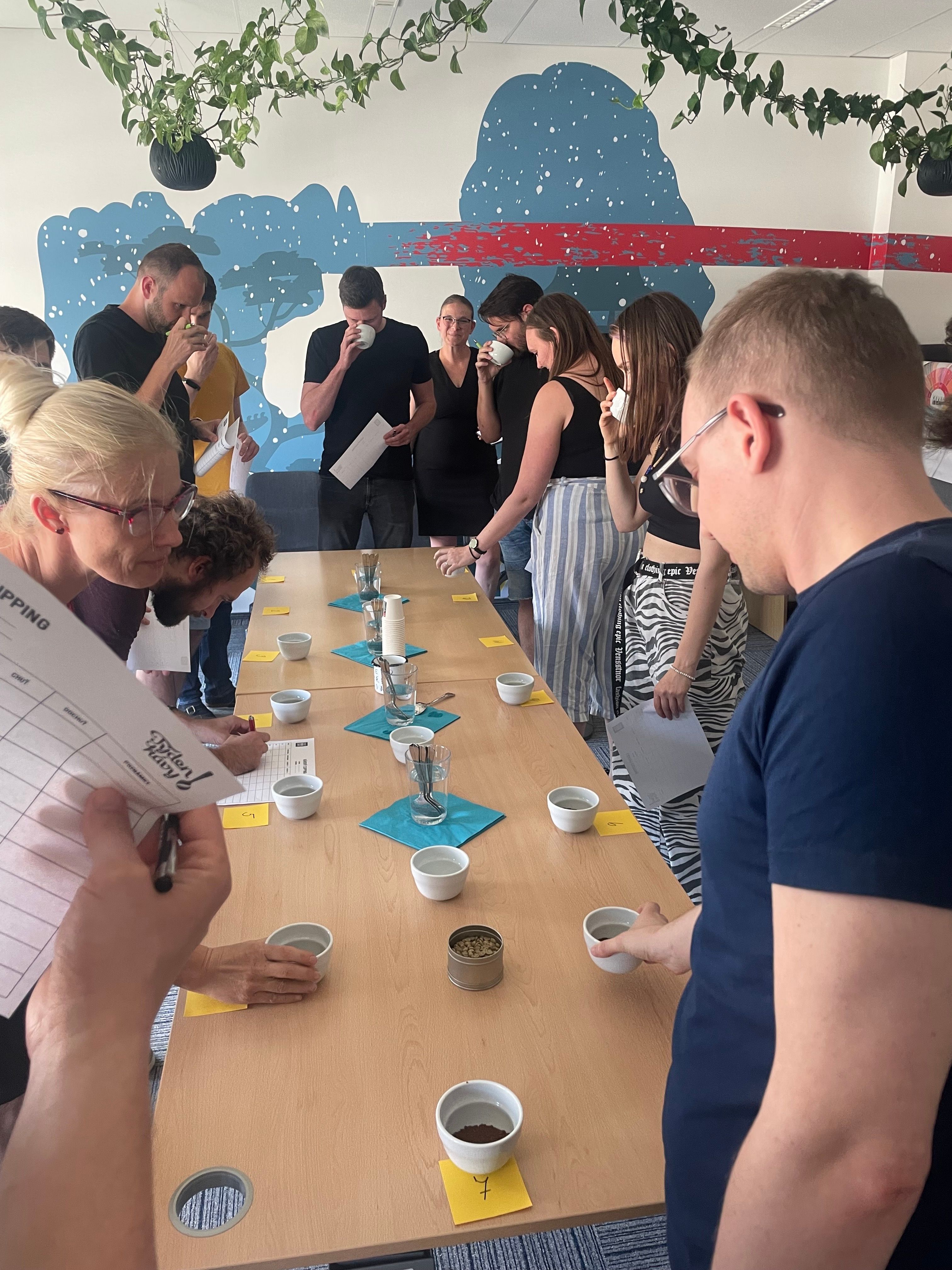
Coffee can have a wide range of flavors, influenced by its variety, origin, processing method, and roasting. Common flavors include: Fruity notes: Citrus, berries, apple, tropical fruit Floral notes: Jasmine, rose, lavender Spicy notes: Cinnamon, nutmeg, cardamom Chocolate and caramel notes: Milk chocolate, dark chocolate, caramel, toffee Nutty notes: Hazelnuts, almonds, pecans
Cupping allows us to explore and appreciate these diverse flavors and aromas that coffee can offer. In the next part of the article, we will take a closer look at the individual types of coffee we tasted during our cupping session.
At the cupping session in our company, we had the opportunity to taste 14 coffee samples from several South Moravian roasteries such as Dalia, QB, Chci Kofein, Poppy Beans, Fifty Beans, Gills, and Blue Tokai:
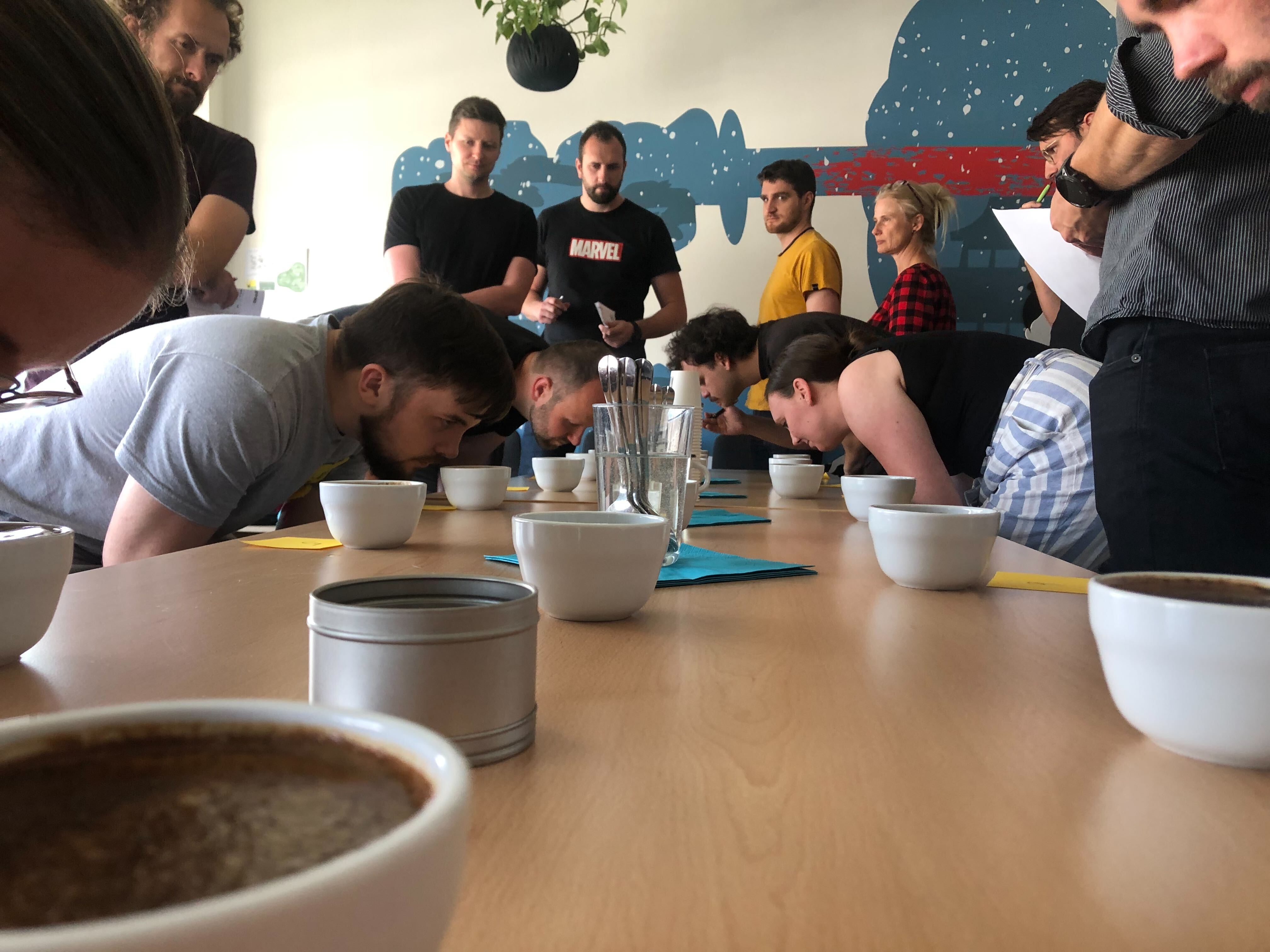
- Region: Lonya Grande, Farm: La Orquidea, Farmer: Litman Diaz Campos
- Altitude: 1750 - 2150 m.a.s.l.
- Processing: Washed
- Varieties: Geisha, Bourbon
2. Rwanda Nyamasheke / qb Roastery
- Region: Nyamasheke, Farm: Nyamasheke
- Altitude: 1600 - 2100 m.a.s.l.
- Processing: Natural
- Variety: Bourbon
- Classification: Microlot
- Roast: Omni roast
3. Raspberry Blossoms from Rwanda / Dalia Roastery
- Region: Huye, Maraba, Farms: Various farmers around Ibisi Station
- Altitude: 1900 m.a.s.l.
- Processing: Natural (dry)
- Variety: Red Bourbon
4. Colombia / Chci Kofein
- Family: Ortiz
- Processing: Washed
5. Colombia Los Pinos / Poppy Beans
- Processing: Washed anaerobic processing
- Farmer: Arcenio Hernandez
- Altitude: 1775 m.a.s.l.
- Variety: Typica
6. Colombia / Fifty Beans
- Farm: El Placer, Farmer: Sebastian Remirez
- Processing: Honey
- Variety: Gesha
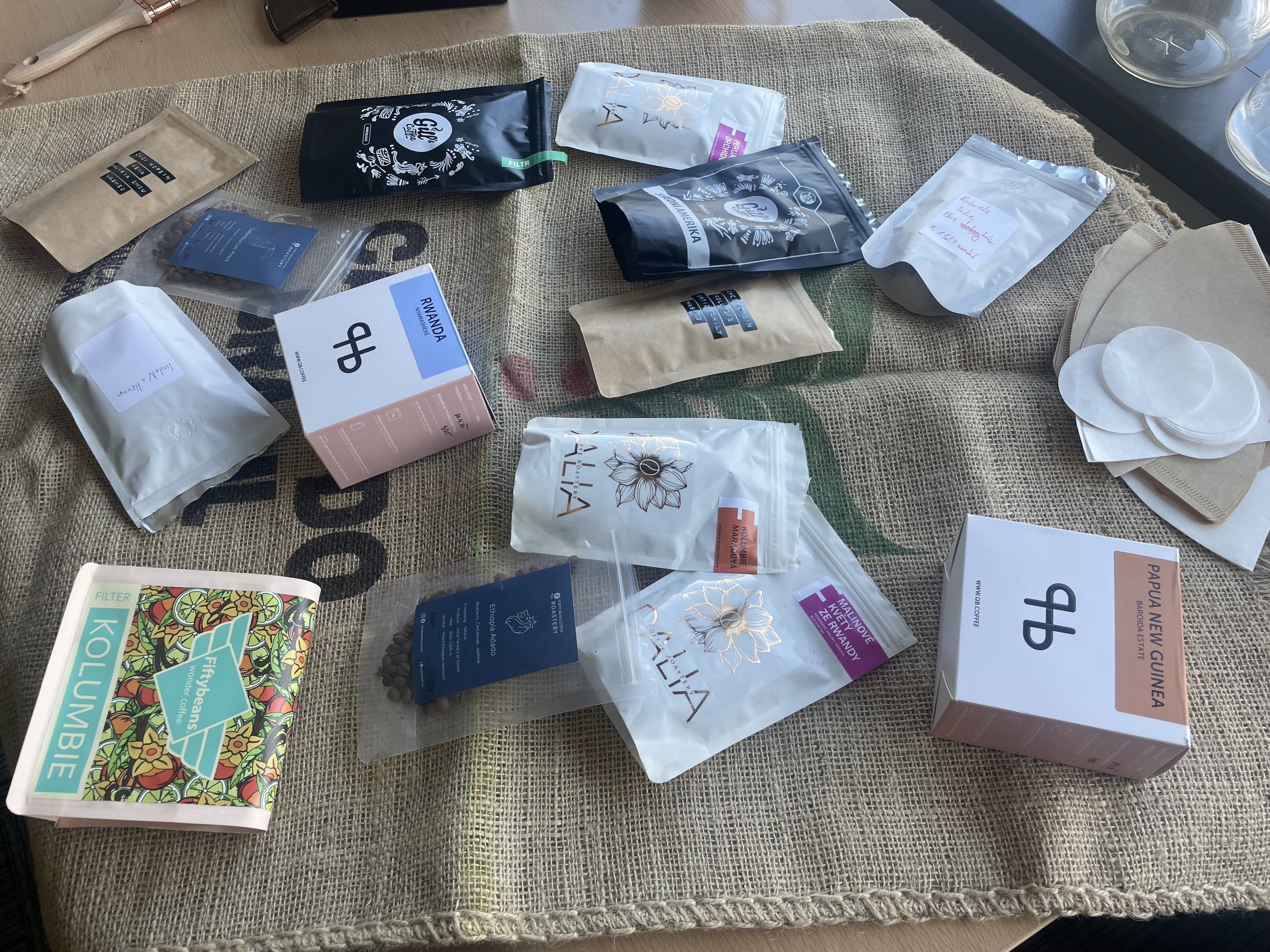 1.jpg7. Colombia Cristina Mueslas / Gills
1.jpg7. Colombia Cristina Mueslas / Gills - Processing: Natural
- Variety: Castillo
8. Passion Fruit Colombia / Dalia
9. Indonesia + Hernandez Blend / Gills
10. Papua New Guinea / qb
- Region: Eastern Highlands, Farm: Barioda Estate
- Altitude: 1700 - 1850 m.a.s.l.
- Processing: Natural
- Variety: Arusha
- Classification: Microlot
- Roast: Filter roast
11. Ethiopia / Poppy Beans 12. Kenya / Chci Kofein 13. Mexico Mixteca/ Gills Bonus: Robusta - 100% Robusta / Blue Tokai



